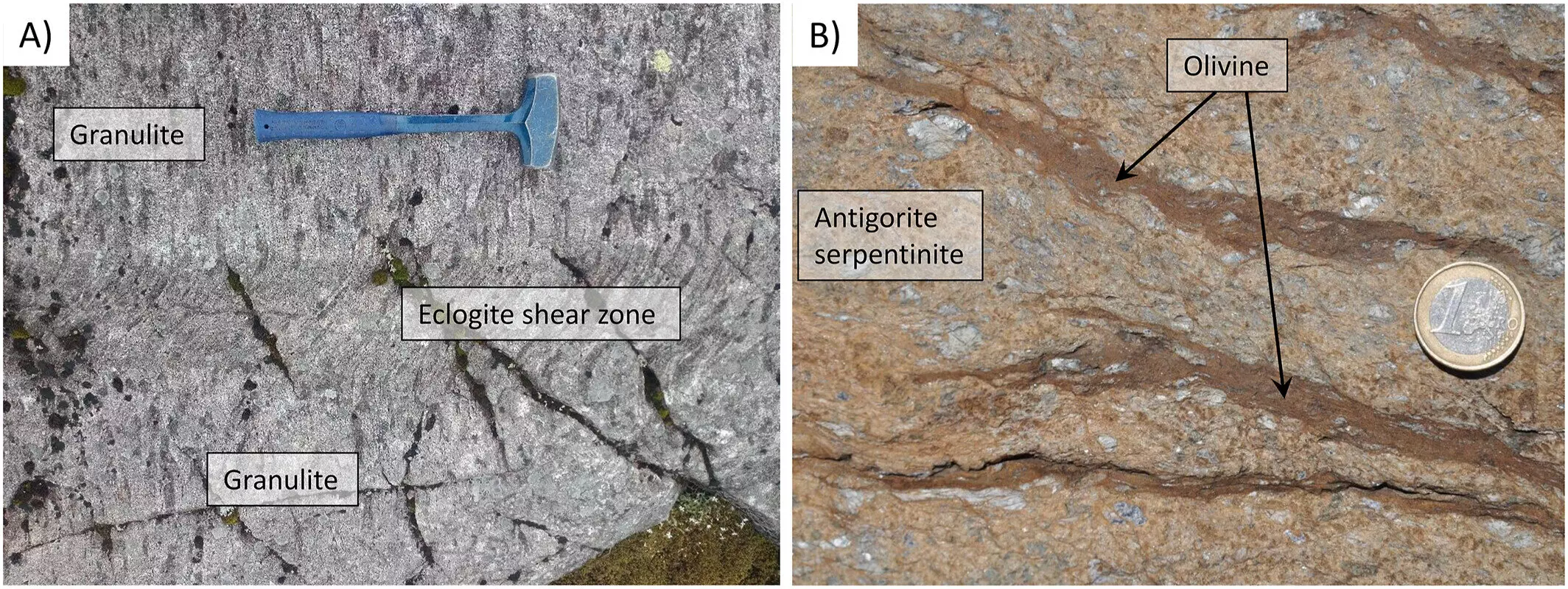In the Earth’s mantle and lower crust, a complex interplay exists between rocks and water that influences geological processes significantly. The continuous cycle of hydration and dehydration not only affects the physical state of the rocks but also plays a crucial role in tectonic movements and seismic activity. Recent studies, particularly those conducted by Schmalholz and his team, seek to explore how water can permeate through what were considered impermeable rock formations, contributing to changes in rock porosity and strength.
Schmalholz’s research introduces an innovative approach by utilizing mathematical models to outline the behaviors of rocks under conditions of extreme pressure and temperature. The team proposes that chemical reactions within these rocks can produce temporary porosity, allowing water to be absorbed and released dynamically. Their study presents a groundbreaking way to model different hydration and dehydration scenarios, providing a fresh perspective on how these processes might drive broader geological phenomena.
An important aspect of the study is its focus on the concept of “dehydration fronts” and “hydration fronts.” A dehydration front captures the phenomenon where water is expelled from minerals, thereby creating less dense formations. As this front moves through the rock, a reaction takes place that can significantly alter the rock’s structural integrity. Conversely, hydration fronts manage to absorb external water, creating denser rocks over time. These dual processes reveal the fascinating ability of rocks to shift from one state to another based on surrounding conditions.
In their analysis, the researchers conducted one-dimensional simulations to illustrate these processes under varying conditions. They identified distinct scenarios for how hydration and dehydration can occur, showcasing the directional flow of water in each case. This innovative approach not only illuminates the behavior of water in geological settings but also highlights the potential for significant seismic activity, as changes in rock porosity can trigger the fracturing necessary for earthquakes.
Moreover, the study emphasizes the intricate mechanisms by which water is redistributed within Earth’s crust. When water is forced out of mineral structures, not only does it create temporary voids, but those voids may also invite new water molecules, further enhancing the dynamic nature of these reactions. The findings reveal an intricate system in which even seemingly solid rock can behave as active participants in the Earth’s hydrological cycle at depth.
The insights from Schmalholz and his team’s work lay a foundation for future explorations into the role of water in Earth’s geodynamics. Despite the inherent challenges in studying subterranean water movement, their derived equations offer a valuable tool for geoscientists looking to unravel the complexities of deep Earth processes. By blending theoretical models with empirical observations, researchers can better understand how water influences tectonics, seismic events, and ultimately, the evolution of our planet’s surface over geological timescales. This research not only deepens our understanding of the Earth’s inner workings but also marks a significant step towards comprehending the broader implications of water cycles in geological contexts.


Leave a Reply